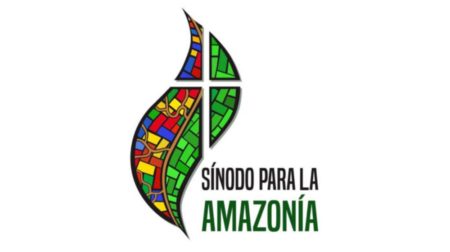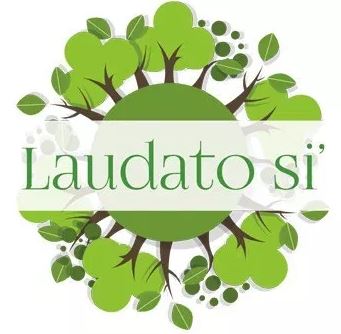
The Amazon synod is halfway over and here is what we know so far…
As the Synod reaches its halfway point, leaders of indigenous communities who are participating in the Synod as auditors are speaking with passion about what is at stake for their communities and their hopes for this synod. “The church is the only institution that is crying out so the whole world awakens,” said José Gregorio Díaz Mirabal, the president of the Ecuador-based Congress of Amazonian Indigenous Organizations. “If we don’t do anything for the planet, we will all disappear.” People want “a say over our lands” and to “stop the great invasion of foreign companies” involved in extraction and the pollution of the air and water. “We cry against” this land grabbing, and “our cry is heated because so many of us are put in prison.” Amazon indigenous leaders and religious men and women see “a sign of hope” that this these problems are “at the center of the church’s attention” at this moment.
Josianne Gauthier, the Canadian general secretary of CIDSE, an international alliance of Catholic solidarity organizations, said that her role at the Synod is “to be in a listening position, to listen to voices we don’t have direct access to all the time” and to consider how to support indigenous communities after the synod through “political pressure” in international political spheres. People who live in Europe and North America have a “heightened responsibility” for this political action since “we live from the benefits of this tragic exploitation in most parts of the world.” Her small language group, which consists of English and French-speaking bishops and other social actors from various parts of the world, is discussing divestment as a way for the church to think about “coherence between words and actions” in light of “Laudato Si’.”

Participants have raised a broad range of issues: inculturation and liturgy, youth ministry and lay collaboration, forming effective communicators, the economy, migration, the protection and safeguarding of water, human trafficking and the sexual exploitation of children.
What is emerging in the synod “is a picture in which everything is connected,” said Giacomo Costa, S.J., secretary for information. Pope Francis’ encyclical “Laudato Si’” “is not just a source of inspiration but something lived out completely” in the Amazon region. Synod participants have also put forth several specific proposals, including the establishment of a “permanent observatory of human rights and protection of the Amazon,” a new church law “relating to the duties of Christians toward the environment” and for Catholic universities to make a “preferential option” for the education of indigenous people.
One key proposal that has emerged is the creation of a “permanent and representative episcopal organization,” coordinated by Repam, to promote synodality in the Amazon, to implement the synod, defend indigenous rights, assist the formation of ministers and address common problems like land exploitation, drug trafficking and human trafficking.
On the much-discussed questions of married priests and the role of women in the Amazonian church, some synod members have shown themselves ready for bold action, while others have expressed caution.
“I support the importance of being able to ordain married men for priesthood so that the Eucharist may become a reality that is closer to people and communities,” said Bishop Carlo Verzeletti of Castanhal, Brazil. “If the Pope would decide” in favor of married priests, he already knows candidates in his local church who “would do an extraordinary job.”
A view expressed is that “under the action of the Spirit, “cum Petrus and sub Petrus,” (With Peter and under Peter),the church is “spurred to a conversion in an Amazonian perspective and to undertake without fear a discernment and a reflection on the theme of the priesthood,” mindful of the infrequency of the celebration of the Eucharist in the region. One proposal is that “the criteria for selecting and preparing the ministers authorised to administer this sacrament [of the Eucharist] be changed so that it is not destined to only a few.”
Another suggestion was that the questions of married priests and female ministries should be dealt with in an ordinary synodal assembly since these themes have a “universal scope.” Another suggestion advised that having married permanent deacons “can represent a real laboratory” before committing to married priests.
The precise support or opposition to specific proposals among synod members is not known because synod discussions are kept under wraps. But one Bishop said “two-thirds” of Bishops in the Amazon region “are in favor” of married priests. Another participant said only a couple of the 185 synod fathers spoke against the proposal. “Of course, there are many contributions with different answers” to the question of married priests. It is “the desire of the Pope that all arguments are placed on the floor so we may consider all of them and then discern.” The Synod does not make decisions but rather “entrusts to the Holy Father something that is in process.”
On October 14th, a “possible updating” of Paul VI’s “Ministeria Quaedam” was suggested. This apostolic letter, published in 1972, promulgated several new norms concerning liturgical ministries like that of lector and acolyte. Lay men but not lay women can be instituted into these ministries. In 2008, the Synod of Bishops on “The Word of God in the Life and Mission of the Church” proposed that “the ministry of lector can be opened also to women, so that their role as announcers of the Word may be recognized in the Christian community,” but no such change has yet taken place.
On October 15th it was suggested that “new paths are needed for ancient traditions,” like those “practices of antiquity that saw ministries related to women,” so the Synod reflected on “the possibility of restoring similar ministries” for women today, in particular those of “lector and acolyte.” Other interventions “suggested that non-ordained ministries be established for lay women,” including those of “the celebration of the Word or of social or charitable activities.”
Also proposed was the introduction of male and female indigenous permanent deacons (diaconi e diacone) “who through the ministry of the Word help the local people to better understand the sacred texts.”
Additional Observations
On October 14th, the Synod discussed the protection of minors and vulnerable adults in the Amazonian region, emphasizing that “the terrible scourge of pedophilia and sexual abuse” requires that the church “is always vigilant and courageous.”
A deep commitment to inculturation will help the church to become “more Disciple and Sister” than “Teacher and Mother,” with a disposition of “listening, service, solidarity, respect, justice and reconciliation,” on October 15th.
At the briefing that day, Bishop Eugenio Coter of Pando, Bolivia, said that the topic of liturgy and inculturation and the possibility of an Amazonian indigenous rite is being “highly debated. Some commissions will work specifically on the idea of giving an Amazonian face to the liturgy. The ease of communication with Pope Francis is very important. We understand each other…not only conceptually but from the heart.”
The membership of the commission for the drafting of the final document has been finalized. Of the President and the 12 members of the writing team, four are Cardinals and one is not a Bishop. The four members elected by the Synod Assembly are from four different countries in the Pan-Amazonian region, while the Papal Appointees include an Austrian, Argentine, Italian and Paraguayan.
President
Cardinal Cláudio Hummes, O.F.M., of Brazil, General Relator of the Amazon Synod
Ex officio members
- Cardinal Lorenzo Baldisseri of Italy, General Secretary of the Synod of Bishops
- Bishop Mario Grech of Malta, Pro-Secretary General of the Synod of Bishops
- Cardinal Michael Czerny, S.J., of Canada, Special Secretary of the Amazon Synod
- Bishop David Martínez de Aguirre Guinea, O.P.,Peru, Special Secretary of the Synod
Members elected by the Synod on October 7th
- Bishop Mário Antônio da Silva of Roraima, Brazil
- Archbishop Héctor Miguel Cabrejos Vidarte, O.F.M., of Trujillo, Peru
- Bishop Nelson Jair Cardona Ramírez of San José del Guaviare, Colombia
- Archbishop Sergio Alfredo Gualberti Calandrina of Santa Cruz de la Sierra, Bolivia
Members appointed by Pope Francis on October 15th
- Cardinal Christoph Schönborn, O.P., Archbishop of Vienna, Austria
- Bishop Marcelo Sánchez Sorondo of Argentina, is the Chancellor of the Pontifical Academy of Sciences and of the Pontifical Academy of Social Sciences (Vatican City)
- Archbishop Edmundo Ponciano Valenzuela Mellid, S.D.B, of Asunción, Paraguay
- Father Rossano Sala, S.D.B., of Italy, is a Professor of Youth Ministry at the Pontifical Salesian University in Rome
This article was written by Luke Hansen SJ and was first published in America Magazine on October 16th, 2019


